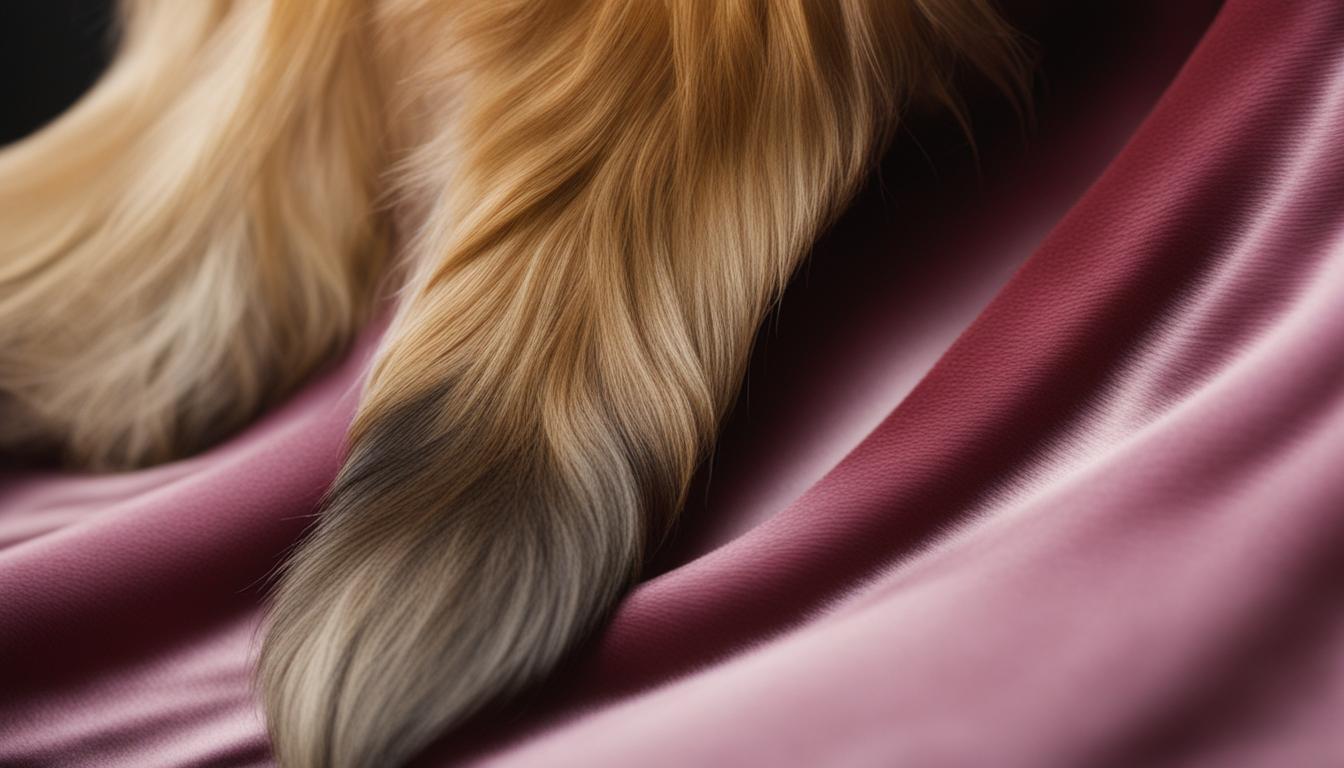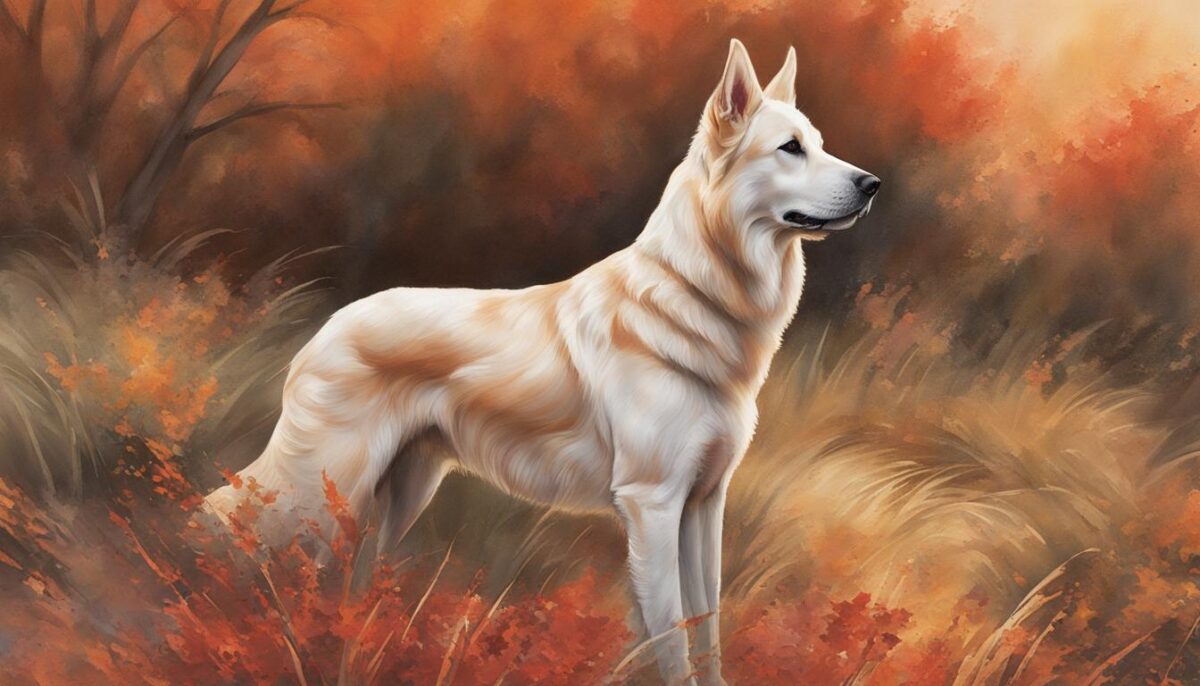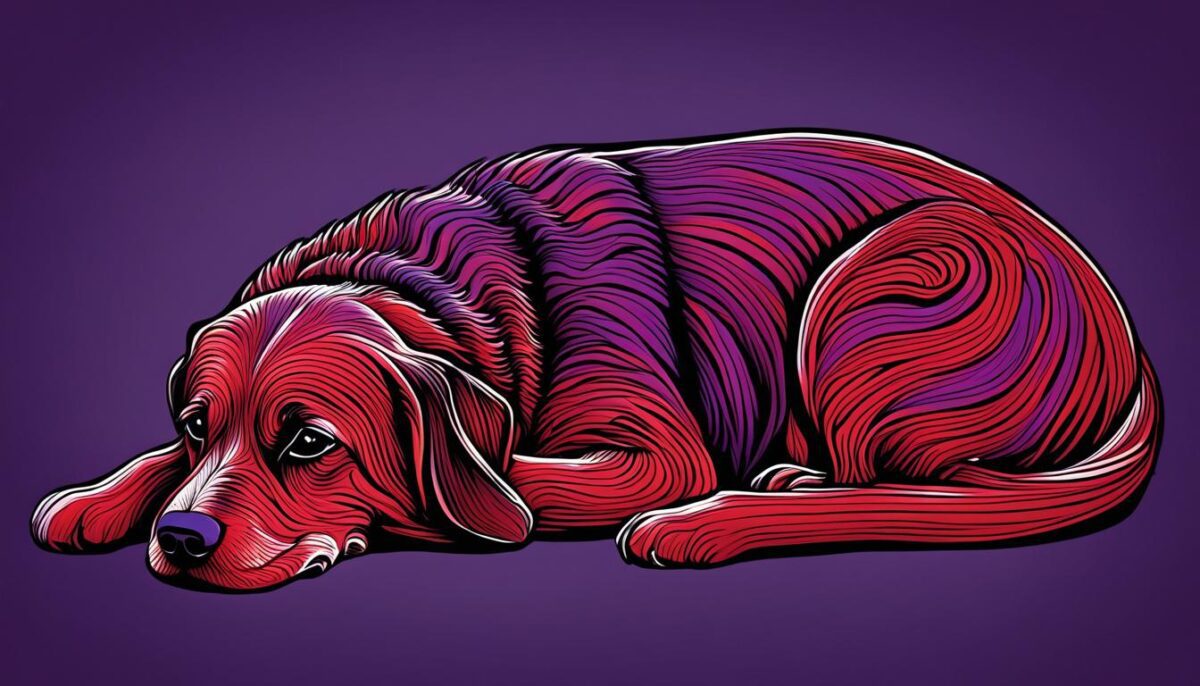Hey there! If you have a girl dog at home who hasn’t been fixed, there are some things you might see that are part of the canine estrous cycle. This is a fancy name for the time when a female dog can have puppies. You may notice your dog’s body changing a bit, maybe they are more fussy, or even cleaning themselves more than usual.
Just like people have a certain time of the month, dogs go through their own cycle, which we sometimes call dog menstruation. You might see signs of heat in dogs like them being extra friendly or their private parts looking swollen. This happens to all kinds of dogs, small ones might start when they’re six months old, but big dogs could take a little longer.
And guess what? These seasons can happen quite often – every six or seven months. But unlike humans, female dogs keep having these cycles all through their lives, even when they get older. They can last from two weeks to a whole month. Now, you might be wondering if our furry friends get those uncomfortable cramps just like humans do during their period. That’s a good question that we can look into!
Key Takeaways
- Dogs have something called the canine estrous cycle that means they can have pups.
- When your dog is in this season, she’s going through dog menstruation.
- Look out for signs of heat in dogs, like them cleaning a lot or their body changing.
- Small dogs might start their cycles earlier than big dogs.
- This cycle keeps going for girl dogs all through their life.
Understanding a Dog’s Reproductive Cycle
Have you ever heard the term dog in heat? It’s another way to say a female dog is ready to have puppies. When your dog is in this part of her reproductive cycle, her body is telling her it’s time to find a friend and make a family. Think of it as a special time for your dog that comes around a few times each year.
The Meaning of “In Heat” or Season
When your dog is “in heat,” it means she’s entered her reproductive cycle. This is when she has the chance to have puppies. Fertility in female dogs ramps up, and their bodies prepare for motherhood.
Recognizing the Signs of Heat
How can you tell if your dog is in heat? Look for symptoms of the canine heat cycle. Her private parts may get bigger and redder, and she might lick herself more or have a bloody discharge. That’s what spotting dog menstruation looks like. She might act extra sweet around boy dogs or pee more often to tell them she’s ready to be a mom!
When You Can Expect Your Dog’s First Season
Little dogs might seem grown-up fast. They can be ready to have puppies when they’re about half a year old. Bigger dogs take more time, sometimes even over 12 months, to have their first estrous cycle. Once it begins, it means they’re stepping into their new role as possible moms!
| Breed Size | Age at First Estrous Cycle | Signs of Maturity |
|---|---|---|
| Small Breeds | 6 Months | Increased affection, slight swelling of genitals |
| Medium Breeds | 6-9 Months | Behavior changes, marking territory more frequently |
| Large Breeds | 12 Months or More | Spotting menstruation, guarding behavior |
The Frequency and Duration of Canine Seasons
Once your dog has gone through their first season, it’s natural to wonder what comes next. Will this happen often? How long does each season last? Let’s dig into what to expect as your furry friend grows up.
Regular Cycles Post-First Season
After your pet’s initial introduction to adulthood, expect regular canine heat cycles to take a predictable turn. Most dogs settle into an estrous cycle frequency of approximately every six to seven months. Younger dogs, however, might not stick to the six-month schedule right away, but they’ll get the hang of it eventually. It’s like learning to ride a bike; you’re wobbly at first, but then you get the rhythm!
Older Dogs and Seasonal Changes
As dogs get older, their bodies change, just like ours. Senior dogs in heat might not have their cycles as often as they used to. Plus, breeding in dogs becomes trickier and riskier with age, so it’s essential to be careful. Remember, the aging and canine reproductive cycle are natural parts of your dog’s life journey.
Average Length of a Dog in Heat
The heat cycle length in dogs varies a bit. Usually, it’s about three weeks, but some dogs have shorter cycles, around two weeks, and some might blaze past three weeks up to a month. Think of it as a doggy period that can be as short or long as it needs to be. Every dog is different!
| Age of Dog | Frequency of Heat Cycles | Duration of Heat |
|---|---|---|
| Puppy to Young Adult (1-3 years) | Every 6-7 months | 2-4 weeks |
| Adult (4-6 years) | Every 6-7 months | 2-4 weeks |
| Senior (7+ years) | Varies (Less often) | 2-4 weeks |
Can Dogs Get Period Cramps?
Do you know when your dog is feeling ouchy, like when she might have a bellyache? Well, female dogs go through a time when they might feel this way too. It’s called estrus, and some people wonder if it gives them menstrual cramps, kind of like people can get.
When your pup is in this estrus time, you might notice she’s a bit wiggly or seems like she’s not herself. She might be feeling discomfort during canine estrus, but it’s hard to say for sure because she can’t just tell us “I have cramps!” Instead, we have to watch her behavior and see if she’s acting like she’s not feeling tip-top.
So, let’s talk about those signs. You might see your dog trying to find a cozy spot more often or maybe she’s not as playful. She could even be a bit grumpy. These things could be clues that she’s experiencing menstrual cramps in dogs. But even though we’re not sure they get cramps like we do, we still want to make things as comfy as we can for our furry friends when they’re in heat.
| What to Watch For | How to Help Your Dog |
|---|---|
| Less playful | Gentle play and cuddles |
| Looking for cozy spots | Make a comfy corner with her favorite blanket |
| Seems grumpy | Give her space and be calm around her |
| Not eating as much | Try yummy, easy-to-eat foods |
Even if we’re not 100% sure if they get periods cramps, you can still be there to help your sweet dog get through the ouchies. Just like when your tummy hurts and someone makes you feel better, you can do the same for your pet.
Observable Behaviors During a Dog’s Season
When your dog is in season, you might notice they’re acting a little different. From the way they try to find a mate to changes in the way they act at home, there’s a lot going on for them. Let’s take a close look at what you might see and why it matters for their health.
Behavioral Changes and Mate Seeking
Dogs can be pretty busy when they’re in season! They might not listen as well as they usually do because they’re so focused on finding a boyfriend dog. This is called mating behavior in dogs. Your dog might also seem more cuddly or just want to be near you more than usual. And have you noticed them peeing more to mark their spot? It’s all part of the changes during the dog heat cycle.
Physical Signs and Discomfort Indicators
There are some physical changes in dogs too when they’re in season. You might see their private parts looking redder or more swollen, and yes, they might even bleed a bit. It can be a little shocking, but it’s normal. If they’re licking themselves more or seem bothered, these are signs of estrus discomfort. It’s just their way of dealing with the changes.
Potential Complications Post-Season
Once your dog’s season is over, you might think things will go back to normal, but keep an eye out! Sometimes, dogs can act like they’re going to have puppies when they’re not. This is known as a false pregnancy in dogs, and it’s because their hormones are changing. Even more serious is a health problem called pyometra, which is an infection. The pyometra symptoms can be very bad, so you have to watch out for any signs of sickness and take good care of their canine reproductive health.
Caring for Your Dog During Her Heat Cycle
When your furry friend is in heat, you want to make sure she feels comfortable and safe. It’s a time that needs extra love and some smart moves to keep both your pet and your home clean and happy. Let’s talk about how you can look after your dog during this special time.
Managing Discomfort and Stress
Your dog might feel a bit strange or act differently when she’s in heat. It’s okay. You can help her by playing her favorite games or giving her some fun toys. A little extra cuddle time can go a long way too. Giving her a calm, quiet space to rest is also super important. And don’t forget, while she’s feeling this way, try to keep her away from male dogs to avoid stress.
Household Cleanliness with Dogs in Heat
Keeping your house clean can be tricky, but there are some cool things you can do. Think about using dog diapers – yes, they’re a real thing – and they can keep the blood away from your carpets and couches. Keep wipes handy for quick clean-ups and maybe set up a special cozy spot for your dog to hang out in that’s easy to clean.
Safeguarding Against Unwanted Mating
Accidents can happen, but when your dog is in heat, you’ve got to be extra careful. To prevent any surprise puppies, take your walks when there aren’t many dogs around. Early morning or late evening might be good times. Always keep your dog on a leash – you’re the boss, and it’s up to you to keep her safe. Remember, keeping her close and under control is the best thing for her when she’s in heat.
Being a responsible dog owner means knowing how to take care of your pet, especially during these special times. Your dog depends on you for comfort, safety, and love. With a few smart changes and a little extra attention, you can get through her heat cycle smoothly. And hey, she’ll love you even more for it!
Conclusion
So, what have we learned about our furry friends? First, it’s totally normal for girl dogs who haven’t been spayed to go through a heat cycle. That’s just part of their natural rhythm. If you have a female pooch at home, being aware of the signs of heat will help you provide the best care for her during these times. Your careful attention matters because, remember, dogs can’t use words to say when they’re not feeling great.
Understanding canine estrous is key to supporting dogs in heat. Keep an eye out for signs that your dog is entering this phase, like changes in behavior or physical signs. And if you see something that doesn’t seem right, or if you’re just not sure, it’s a good idea to check in with your vet. They’re the experts in canine reproductive care, and they’re there to help keep your dog healthy and happy.
It’s all about being ready and knowing what to expect. When you know what’s normal for your dog, you can spot if something’s odd. Helping your pup through her heat cycle is just one part of being a super pet owner. So, keep up the good work looking after your four-legged pal!
FAQ
What does it mean when a dog is “in heat” or in season?
When a dog is “in heat” or in season, it refers to the phase in the canine estrous cycle when a female dog becomes receptive to mating and can become pregnant. This period is marked by physiological and behavioral changes due to fluctuations in reproductive hormones.
What are the signs of heat in dogs?
The signs of heat in dogs include swelling and redness of the genitals, bleeding or spotting, increased licking of the genital area, changes in behavior like being overly affectionate or agitated, and sending off scents to attract male dogs. A dog in heat may also mark territory with urine more frequently and show interest in male dogs by flagging, which is raising the tail to signal receptivity.
At what age can you expect your dog to have their first season?
Small dog breeds may experience their first season as early as six months old, while larger breeds might not have their first cycle until they are over a year old. It varies between individual dogs and breeds, with sexual maturity being a key factor.
How often do dogs go into heat?
After their first season, most dogs go into heat approximately every six to seven months. However, the frequency can vary based on breed, age, and individual health. Some female dogs may have irregular cycles at first which later regularize.
Do older dogs continue to have heat cycles?
Yes, older dogs continue to have heat cycles throughout their lives, although the frequency and intensity of the heat may diminish with age. It’s important to note that while senior dogs can still go into heat, breeding at an advanced age can pose health risks to both the mother and the puppies.
How long does a heat cycle last for a dog?
The length of a heat cycle in dogs typically lasts around two to three weeks but can range from as little as two weeks to as long as four weeks. During this period, a dog will go through different stages, including proestrus and estrus.
Can dogs experience period cramps similar to humans?
It’s challenging to determine if dogs experience menstrual cramps like humans do. While they can exhibit signs of discomfort such as restlessness or clinginess during their heat cycle, there is no concrete evidence to prove they have cramps. If your dog seems unusually uncomfortable, it’s best to consult a veterinarian.
How do dogs behave when they’re in heat?
Behaviors during a dog’s season can vary but often include increased anxiety, mate-seeking activities like roaming or escaping, less obedience, and possible moodiness. Dogs might also show nesting behavior and can even undergo a false pregnancy where they mimic maternal behavior despite not being pregnant.
What should I do if my dog shows signs of discomfort during her season?
If your dog seems uncomfortable during her season, you can help her by providing extra attention, engaging her in gentle play and exercise, offering a quiet and cozy environment, and keeping her entertained and distracted from the symptoms of the heat cycle. Consider consulting a vet if her discomfort seems severe.
What are some tips for keeping my home clean when my dog is in heat?
You can maintain household cleanliness by confining your dog to easy-to-clean areas, using doggy diapers or special pants to contain bleeding, placing washable covers on furniture, and regularly cleaning up any spots or stains. It is also helpful to have a set area for your dog to relax that is lined with absorbent materials.
How can I prevent unwanted mating during my dog’s heat cycle?
To prevent accidental breeding, keep your dog leashed and supervise her closely during walks, especially in areas where male dogs are present. Schedule outings during less busy times to avoid encounters with male dogs, and secure your yard to prevent males from entering and your dog from escaping.


